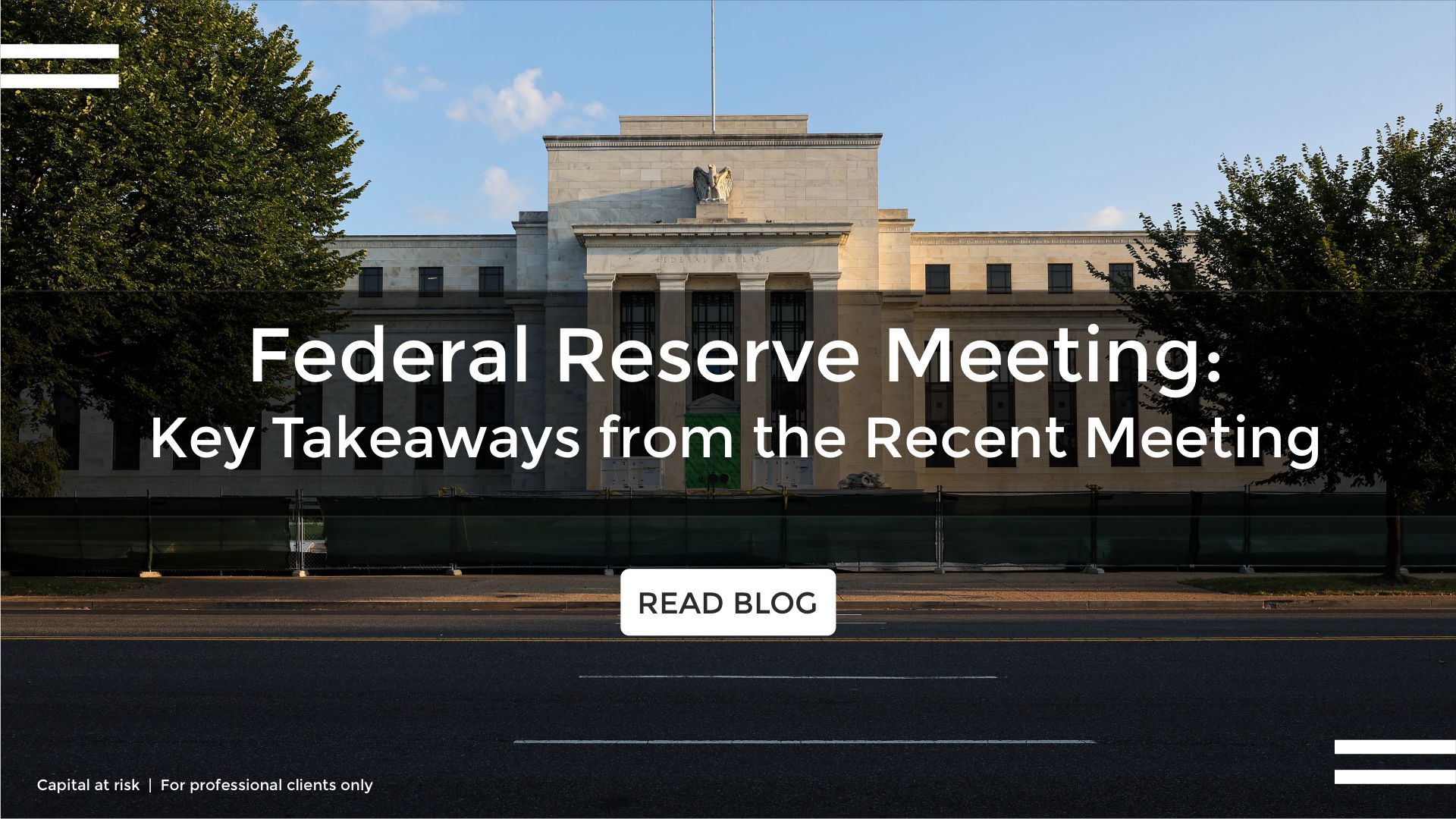Federal Reserve Meeting Highlights
Posted:
Federal Reserve on December 13 in their meeting left the interest rate unchanged for their last 2023 policy meeting. The US central bank Chief Jerome Powell has indicated that the unprecedented tightening of monetary policy is probably complete. This statement comes in light of inflation decreasing more rapidly than anticipated, and there is now consideration of potential reductions in borrowing costs on the horizon. The Fed meeting indicated that they will cut borrowing costs three times in the upcoming year signaling a shift towards the next plan to curb rapid inflation.
Furthermore, Central Bank policymakers kept the interest rate in a range between 5.25% to 5.5% where they have been since July, following a series of rapid increases in the interest rates that commenced in March 2022, pushing borrowing costs to their highest level in 22 years by this summer. The US officials have kept the policy rate steady for three consecutive sessions.
The U.S. central bank is anticipated to maintain a hawkish stance due to inflation persisting above its 2 percent target. The Consumer Price Index (CPI) for November increased by 3.1 percent.
The Federal Reserve is legally tasked with the responsibility of ensuring stable prices and maximum employment, two objectives that can occasionally be at odds with each other. Following a surge in inflation to a 40-year high last year, Powell mentioned that officials believe they are approaching a challenging but sought-after "soft landing." This scenario involves inflation returning to the Fed's 2% target in an economy that is gradually slowing down without experiencing a crash, while also maintaining low unemployment levels.
According to projections released on December 13th, Federal Reserve policymakers anticipate reducing borrowing costs to 4.6% by the end of 2024. This marks a notable decrease from their earlier estimate of 5.1%, which was disclosed in September. The forecast suggests that officials are considering three quarter-point rate cuts in the coming year.
Markets reacted positively as stock markets experienced a rally on December 13 afternoon, driven by the Federal Reserve's indication of a forthcoming easing of interest rates. The upward trend continued during Powell's press conference, and the market closed with notable gains. The S&P 500 index rose by approximately 1.4%, and the Dow Jones Industrial Average achieved a record closing high. Simultaneously, the U.S. dollar weakened against a basket of currencies, and U.S. Treasury yields declined. Moreover, Traders dealing in futures contracts linked to the Federal Reserve's policy rate are indicating expectations of rate cuts beginning in March 2024 and foresee a policy rate at the end of 2024 that is 1.5 percentage points lower than the current level.
Additionally, the Fed officially lowered its inflation forecast for 2024, now projecting a rate of 2.4%, down from the previous estimate of 2.6%.
The recent projections and Powell's statements represent a noteworthy shift for the Feds which has been hesitant to declare victory over inflation. The headline personal consumption expenditures inflation by the end of 2023 is expected to be at 2.8% decreasing further to 2.4% by the end of the following year, which is close to the Fed's 2% target. This adjustment seems to have a minimal impact on unemployment, with the rate expected to rise from the current 3.7% to 4.1%, consistent with the projection in September. Additionally, economic growth is projected to slow from an estimated 2.6% in the current year to 1.4% in 2024. Powell characterized the current situation as "so far, so good."
The US has been grappling with swift inflation since the early part of 2021, as prices surged due to disruptions in global supply chains and shortages of various goods, such as cars and furniture. The situation was further exacerbated by increased fuel and food costs following the Russia-Ukraine war in 2022.
Several significant shocks, including disruptions in global supply chains and shortages, coincided with robust demand. Households, having saved considerably during the pandemic and receiving government relief payments, began spending enthusiastically. This heightened demand gave companies the ability to raise prices without deterring customers. Firms, facing a strong labor market with more job openings than available applicants, also increased wages to attract workers.
The Federal Reserve responded to these conditions by swiftly raising borrowing costs, including a series of substantial three-quarter point increases starting last year. The objective was to make borrowing more expensive for activities like home purchases, car financing, or credit card spending, aiming to cool demand and weaken the robust labor market.
In recent months, a combination of supply chain improvements and a slightly softened demand has led to a significant reduction in inflation. Recent data indicates an overall slowdown in consumer price increases, with November figures showing a decline to 3.1% from the peak of 9.1% observed in the summer of 2022.
The November edition of the Fed's inflation measure comes out more of a delay. It is scheduled to be released on December 22.
DISCLAIMER
This is a disclaimer stating that all trading and investing comes with risks. Always do your research and do not invest more than you can afford to spend.
GraniteShares accepts no responsibility for any loss or damage resulting directly or indirectly from the use of this blog or the contents.
This blog does not constitute an offer to buy or sell or a solicitation of an offer to buy securities in any company. Nothing contained herein constitutes investment, legal, tax or other advice nor is to be relied upon in making an investment or other decision. No recommendation is made positive or otherwise, regarding individual securities or investments mentioned herein. Any summary list of risk factors does not purport to be a complete enumeration or explanation of the risks involved in a particular investment. Prospective clients must consult with their own legal, tax and financial advisers before deciding to invest. This email contains the opinions of the author and such opinions are subject to change without notice. The source of data is GraniteShares unless otherwise stated. No guarantee is made to the accuracy of the information provided which has been obtained from sources believed to be reliable. This email and the information contained herein is intended only for the use of persons (or entities they represent) to whom it has been provided. Past performance is not a reliable indicator of future results. The value of an investment may go down as well as up and can result in losses, up to and including a total loss of the amount initially invested. Investments may involve numerous risks including, among others, company risks, general market risks, credit risks, foreign exchange risks, interest rate risks, geopolitical risks and liquidity risks. Please note that GraniteShares short and leveraged Exchange Traded Products are for sophisticated investors.


